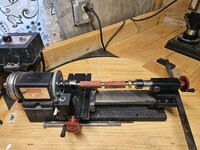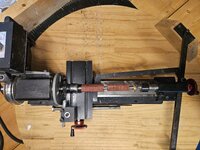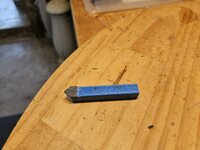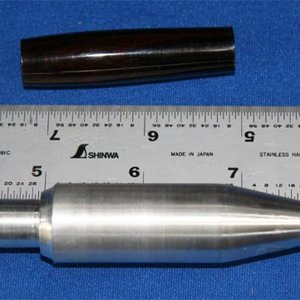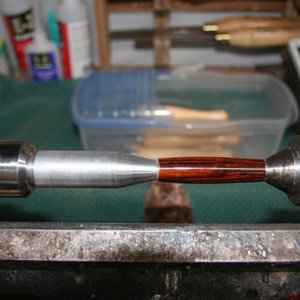As far as TBC, you can use mandrel bushings on any pointed live center on the tailstock.
Here is the first DRIVE center used on the first TBC on this forum back in 2007 or 2008, and it was used on standard mandrel bushings back then:
Imported Photo from leehljp. Please edit title and description.
www.penturners.org
This is the setup of the first TBC and it was not the 60° that some people say is needed. For specialty 60° bushings, a 60° live center and drive center are necessary. But if you use standard Mandrel Bushings, any size live / drive center should work.
Imported Photo from leehljp. Please edit title and description.
www.penturners.org
This is the tool rest for woodturning and it worked OK for me. I later bought the dual post tool rest:
https://taigtools.com/product/4-inch-swivel-joint-tool-rest-wood-turners/
I have the one you show in your pict above, but that is for metal turning.
What kind of chisel are you using for turning wood?

